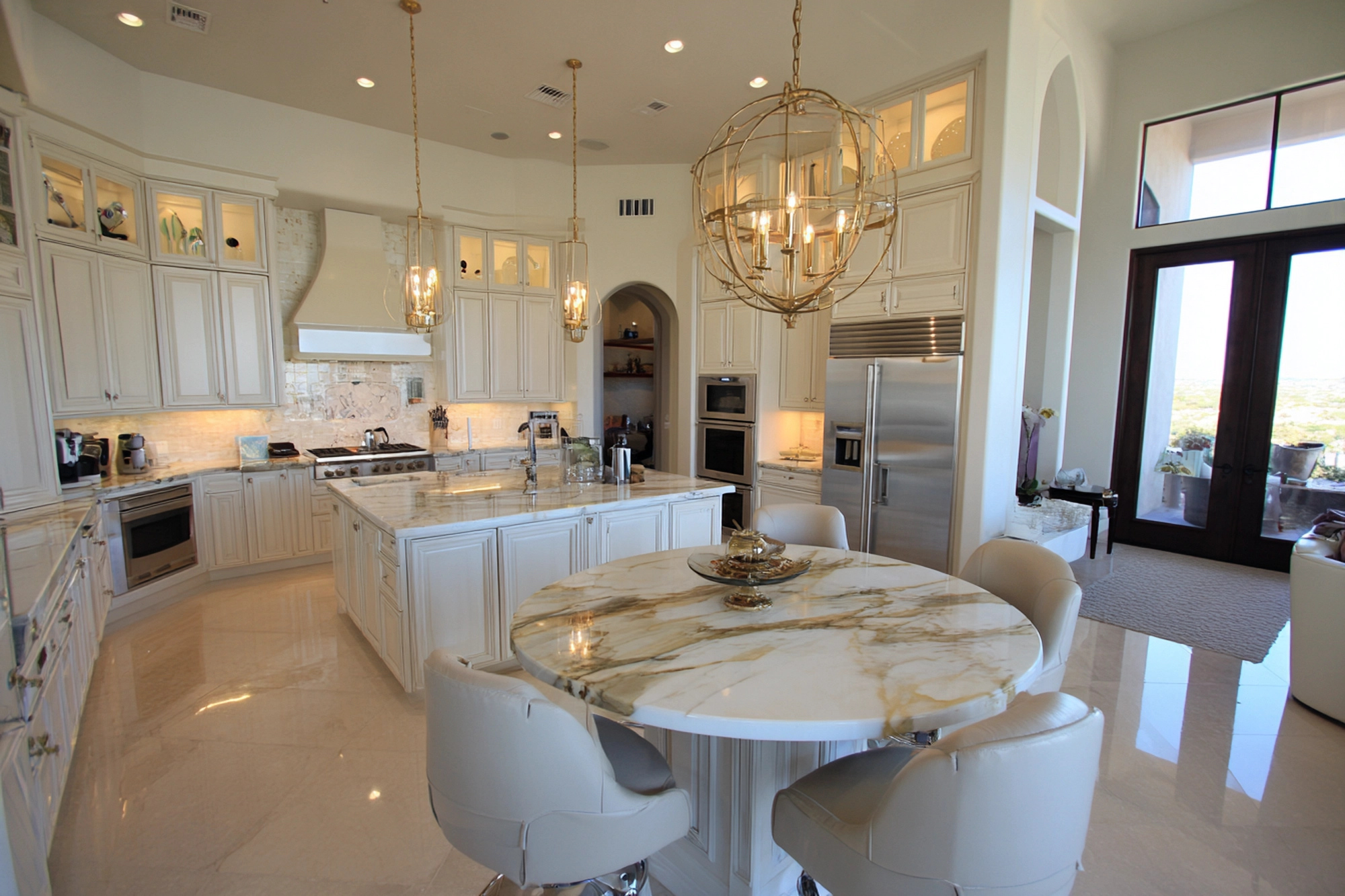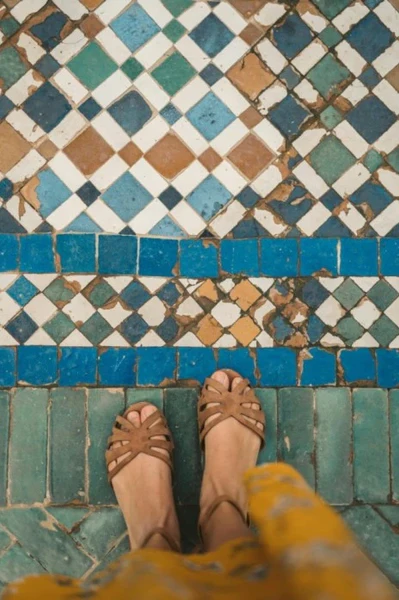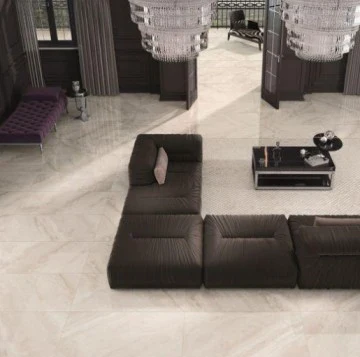
Real help. Real fast.
Call or text (650) 215-6464
Most replies within minutes · Mon–Fri 8–5 PT
Or [email protected] 24/7

Call or text (650) 215-6464
Most replies within minutes · Mon–Fri 8–5 PT
Or [email protected] 24/7


Summary: Porcelain tiles have caught the fancy of homeowners and interior designers, thanks to their durability, versatility, and stunning aesthetics. These tiles offer a wide range of styles, patterns, and finishes, allowing flexibility to create unique spaces that reflect sophisticated taste and vision.
However, one common concern is their potential for slipperiness, especially in areas prone to moisture.
Homeowners often ask us, “Is porcelain tile slippery?”
In our experience, bathrooms, kitchens, and outdoor spaces are particularly susceptible to this issue, as the presence of water, oil, or other liquids can create a slithery surface. This can pose a safety risk, particularly for children, elderly individuals, or those with mobility issues.
This blog will explore the key markers of identifying the slipperiness of porcelain tiles and how to resolve it in an attempt to ensure safety and functionality of a space.
About the Author: Elchin, co-founder of Solidshape, brings over 20 years of design experience. He’s consulted on hundreds of projects—from malls to luxury homes—and is known for helping clients make smart, stylish tile choices.
It is a type of ceramic tile that is made from dense, fine-grained clay and fired at high temperatures, resulting in a strong, durable, and water-resistant material.
The composition of porcelain tile makes it an ideal choice for a wide range of applications, both indoor and outdoor, including floors, walls, countertops, and decorative accents.
Porcelain tiles offer a wealth of benefits that make them a popular choice among homeowners and designers alike.
Porcelain tiles are highly resistant to scratches, chips, and cracks, making them a long-lasting investment for any space.
With a wide range of colors, patterns, and finishes available, these tiles can mimic the look of natural materials like stone, wood, or marble, offering endless design possibilities.
These are suitable for various applications, from high-traffic commercial spaces to luxurious residential settings, both indoors and outdoors.
The finish of a porcelain tile plays a significant role in its slip-resistance properties. The three main types of porcelain tile finishes are:
A glossy finish on porcelain tiles creates a smooth, reflective surface that can add a sense of elegance and sophistication to a space.

However, glossy finishes can be more slippery, especially when wet, making them less suitable for areas prone to moisture or high foot traffic.
Matte porcelain tiles have a non-reflective, slightly textured surface that offers improved slip resistance compared to glossy finishes.

It provides better traction, making it a safer choice for areas like bathrooms, kitchens, and entryways.
Textured porcelain tiles feature a more pronounced surface texture, which can range from subtle undulations to bold, three-dimensional patterns.

The increased surface texture of these tiles provides superior slip resistance, making them an excellent choice for areas with a higher risk of slips and falls, such as outdoor spaces, pool surrounds, and commercial settings.
Homeowners should know what influences the slipperiness of porcelain tiles. Being aware of these characteristics can help in making informed decisions when selecting tiles for various applications.
The relationship between surface texture and slip resistance is not always straightforward, especially when choosing porcelain tiles. Interior designers, homeowners, and architects must contemplate slip-resistance rating (R-value), surface profile, and finish type.
For bathrooms, kitchens, outdoors, and other wet areas, matte or textured finish porcelain tiles work best. They offer better traction and have anti-slip properties which minimizes the risk of falls. And the best part is that you need not compromise on style.
Experts also suggest avoiding the glossy or polished finish of porcelain tiles. Their smoother surface and low traction scope make them prone to slips and falls, particularly if the floor is wet.
The environment in which porcelain tiles are installed can greatly impact their slipperiness. Two key factors to consider are:
A wet surface means a thin film between the tile and the feet or shoe’s sole, turning the floor slip-prone and unsafe.
On the contrary, a dry surface (better if it’s textured or matte finish) builds the right traction and creates a safe environment in the house – no risk of slips/falls.
If you wish to install porcelain tiles in the outdoor areas, use a higher slip-resistance design and finish. However, experts recommend installing any type of porcelain tiles for dry indoor areas as it’s not susceptible to external contaminants like dirt, algae, leaves, etc.
The way we care for porcelain tiles can notably impact the slip resistance. Neglecting regular cleaning or using inappropriate cleaning products can lead to the buildup of dirt, grime, or slippery residues on the tile surface, making it skiddy and increasing the risk of accidents.
To maintain the slip resistance of porcelain tiles, it is crucial to follow a regular cleaning routine using pH-neutral, non-abrasive cleaners. Avoid using cleaning products that leave behind a slippery residue, such as oil-based or wax-based cleaners, as these can create a layer on the tile surface that reduces traction.

Promptly addressing any spills or wet areas on the tile surface can prevent it from being slick. Regularly inspecting the tiles for any signs of wear, damage, or loss of slip resistance can also help identify potential safety hazards early on, allowing for timely maintenance or replacement.
There are several methods available to enhance the traction of porcelain tiles. These strategies allow for the creation of beautiful, stylish environments without compromising on safety, ensuring that porcelain tile surfaces remain both visually appealing and secure for years to come.
By implementing these strategies, you can create beautiful and secure environments that prioritize the well-being of those who use them.
One effective way to improve traction is by applying anti-slip treatments or coatings to the tile surface. These products work by creating a microscopic texture on the tile, increasing the surface roughness and providing better grip, even in the presence of moisture.
Anti-slip treatments come in various forms, such as sprays, liquids, or coatings, and can be applied to both new and existing porcelain tile installations. Some popular options include:
These products penetrate the surface of the tile, filling in microscopic pores and creating a textured, slip-resistant surface without altering the appearance of the tile.
These coatings form a thin, transparent layer on top of the tile surface, providing a textured, skid-resistant finish. Some topical coatings may slightly alter the appearance of the tile, such as adding a matte or satin finish.
While some anti-slip treatments can be applied as a DIY project, it is generally recommended to seek the assistance of a professional to ensure proper application and optimal results. A professional can assess the specific needs of your space and recommend the most suitable anti-slip treatment for your porcelain tiles.
Upgrade your space with Solidshape’s anti-slip porcelain tiles for unparalleled safety and elegance. Contact our experts to discover the ideal tiles for your floor or wall.
Another way to enhance the traction of porcelain tiles is by strategically placing slip-resistant mats and rugs in high-risk areas. This is particularly effective in spaces where the presence of water or other liquids is more common, such as:
Placing a slip-resistant mat or rug at the entrance of a room can help absorb moisture from shoes and prevent it from being tracked onto the tile surface, reducing the risk of slips and falls.
Incorporating slip-resistant mats or rugs near sinks, tubs, or showers can provide additional traction in these moisture-prone areas, enhancing safety for users.
Using slip-resistant mats or rugs on outdoor porcelain tile surfaces, such as patios or pool decks, can help provide extra traction and reduce the risk of slips and falls in the presence of water or other outdoor contaminants.
When selecting mats or rugs, it is recommended to choose materials with a high slip resistance rating, such as rubber-backed or textured options. These materials provide superior traction and stability, ensuring that the mats or rugs themselves do not become a slipping hazard.
Additionally, regularly cleaning and maintaining the slip-resistant mats or rugs is essential to preserve their effectiveness over time. This includes promptly replacing any worn or damaged mats or rugs to maintain optimal slip resistance and safety.
Now that we have an idea of different elements affecting the slipperiness of porcelain tiles, we can make a wiser decision to select the right design pattern, texture, and finish.
At Solidshape, we understand the importance of creating spaces that seamlessly blend style, durability, and safety. That’s why we offer an extensive range of porcelain tiles designed to provide superior traction and slip resistance without compromising on safety or aesthetic appeal.

Our selection includes a wide range of porcelain tiles with matte and textured finishes, providing improved traction and slip resistance for various applications.
We partner with leading manufacturers who utilize advanced technologies to create porcelain tiles with enhanced slip resistance properties, ensuring optimal performance and safety.
At Solidshape, we maintain the highest quality standards, offering porcelain tiles that are designed to withstand the test of time and provide long-lasting performance.

Our exclusive collection features a wide array of stunning designs, patterns, and colors, allowing you to create unique and luxurious spaces that reflect your personal style and vision.
Our knowledgeable team of experts is dedicated to providing personalized recommendations based on your specific application area, user needs, and design preferences.
We are committed to ensuring our customers’ satisfaction and safety by offering the highest quality, slip-resistant porcelain tiles, and expert guidance throughout the selection process.
When designing luxury homes and high-end interior spaces, it’s important to consider the slip resistance of porcelain tiles. Selecting the right porcelain tiles and finishes is essential for creating spaces that are not only visually appealing but also safe and functional.
Solidshape’s commitment to providing premium, slip-resistant porcelain tiles and expert guidance ensures that our customers can achieve the perfect balance of style and safety in their luxury homes and interior design projects.
Explore our stunning collection of porcelain tiles and consult with our experienced specialists to find the ideal solutions for your unique needs and design vision.
The slipperiness of porcelain tile depends on various factors, including the surface finish, texture, and environmental conditions. Porcelain tiles with a glossy finish tend to be more skiddy, especially when wet, while those with matte or textured finishes offer better slip resistance.
Proper maintenance and cleaning also play a role in enhancing or maintaining the traction levels of porcelain tiles.
While porcelain tiles offer numerous benefits, such as durability, versatility, and aesthetic appeal, there are a few potential drawbacks to consider:
Some porcelain tiles, particularly those with a glossy finish, can be slippery when wet, posing a safety risk in certain areas.
Porcelain tiles are generally more expensive than ceramic tiles, which can impact project budgets.
Due to their density and hardness, porcelain tiles can be more challenging to cut and install compared to other types of tiles.
However, these disadvantages can be mitigated by selecting the right porcelain tiles for the application, such as those with slip-resistant finishes, and working with experienced professionals for installation.
Yes, there are several methods to enhance the slip resistance of porcelain tiles, including:
Tiles with textured or matte finishes generally offer the best slip resistance, making them the least slippery option for various applications.
Some examples of tiles with excellent slip resistance properties include:
These tiles feature a more pronounced surface texture, providing superior traction and slip resistance.
The non-reflective, slightly textured surface of matte porcelain tiles offers improved slip resistance compared to glossy finishes.
Made from dense, unglazed clay, quarry tiles have a naturally rough surface that provides excellent slip resistance, making them a popular choice for commercial kitchens and outdoor spaces.
The naturally textured surface of terracotta tiles offers good slip resistance, particularly when sealed with a non-slip finish.
When selecting tiles for areas prone to moisture or high foot traffic, it is essential to consider the slip resistance rating and consult our professionals to ensure the most appropriate choice for your specific application.